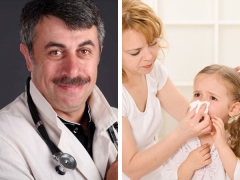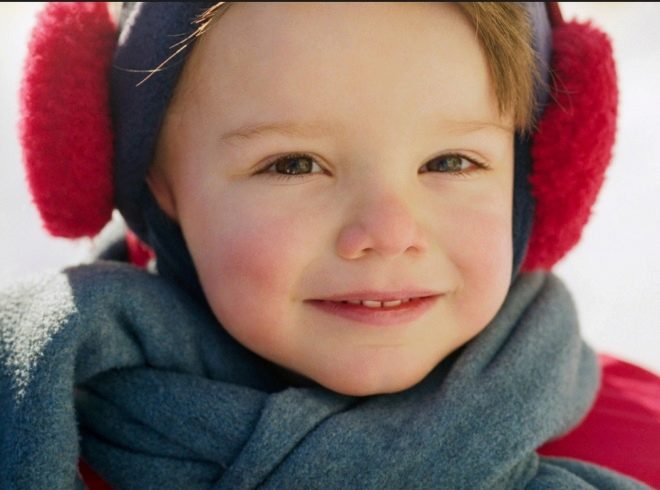Dr. Komarovsky about colds in children
Colds most often appear in the autumn, so the autumn period is often called the cold season. What can popular pediatrician E. Komarovsky tell about this problem?
Is it a cold?
The famous doctor draws the attention of parents to the fact that quite often the common cold is called viral infections of the respiratory tract (ARVI). In fact, these are completely different problems, because ARVI occurs in a child who has become infected with a virus from another person, and hypothermia most often results in a cold.
At the same time, Komarovsky notes that in most cases, when they say that the baby has a cold, the cause of the disease is a virus. The common cold, he said, is not a diagnosis, but only an indication of how the disease began. He also calls the principle feature of any cold their non-communicable.
The reasons
The main reason for colds is hypothermia. Under normal conditions, when the child is affected by cold, it stimulates its adaptation mechanisms. Normally, metabolism is activated and the child’s body begins to produce more heat. At the same time, the skin vessels spasm and the heat release decreases.
In the case of a very intense and long-lasting cold, for example, if a child fell into cold water or spent too long in the cold, the reserves in his body will not be enough. In such situations, a decrease in heat release and an increase in its products cannot ensure the maintenance of temperature in the baby’s body. As a result, a general overcooling occurs. It is manifested by the pallor of the baby’s skin, drowsiness, low body temperature, and bradycardia.
Komarovsky is sure that hypothermia among children in the modern world (in a civilized society) is very rare. An accident or crime can lead to it. In this case, colds in babies occur quite often. It is enough, for example, to drink something cold, to sweat and sit in the draft, soak your feet in the rain. And immediately - cough, sick throat, temperature rise. Why is this happening?
Famous pediatrician explains all the presence of microorganisms in the respiratory tract. Some of them are safe for humans and never cause diseases. Others just wait to become the source of the disease - they are representatives of opportunistic flora. And they are waiting for the moment when the local immunity of the child is reduced.
Due to hypothermia, the vessels in the mucous membrane of the respiratory tract spasm, which leads to a decrease in protection against germs. According to Komarovsky, the following catarrhal factors lead to this situation:
- General cooling of the body, for example, with the wrong choice of clothes, a long stay outside in the cold or after a long swim in cool water.
- A spasm of blood vessels, which occurs reflexively when exposed to cold on the sensitive areas of the feet, for example, when walking barefoot on a cold surface or when getting wet shoes.
- Rapid loss of heat due to sweating and drafts.
- Local cooling of the mucous membrane when the child inhales the frosty air, eats ice cream or drinks something cold.
The reaction of the child's body to such factors will be determined by their intensity and duration, the number and type of bacteria on the mucous membranes, the severity of lack of blood flow to the mucous membranes, and the state of local immunity. If blood circulation is restored quickly, and local immunity before the exposure to the cooling factor was strong, the inflammatory process can be avoided.
Since the bacteria in the respiratory tract live mainly in the lymphoid tissue, the common cold is most often manifested by adenoiditis and tonsillitis. With inadequate local immunity, tonsillitis becomes chronic and during hypothermia it becomes aggravated. According to Komarovsky, the disease, which is popularly called “cold”, is precisely the exacerbation of tonsillitis. And precisely for this reason, colds in infants of the first year of life almost never happen.
Prevention
According to Dr. Komarovsky, you can prevent a cold if:
- Dress and shoe a child for the weather.
- Monitor the room temperature.
- Avoid eating too cold food and drinks.
- Strengthen immunity by conducting tempering procedures.
For information on when to go to the doctor, see the transfer of Dr. Komarovsky.












